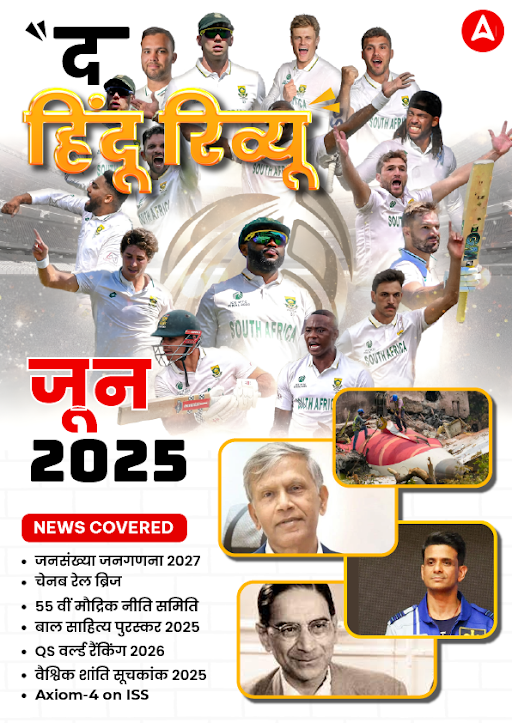SBI PO और NIACL Assistant की परीक्षा के लिए अब केवल कुछ ही दिन शेष हैं. यह समय SBI PO Prelims और NIACL Assistant Prelims 2017 की परीक्षा के लिए अपनी तैयारी में तेजी लाने का है. यह अंग्रेजी के प्रश्न आपको BOB PO और NICL AO 2017 recruitment examination में भी बेहतर अंक प्राप्त करने में सहायता करेंगे. हम व्याकरण अनुभाग के लिए study notes भी प्रदान कर रहे है. और आप New Pattern English Questions का भी अभ्यास कर सकते है.

Directions (1-5): A number of sentences are given below which, when properly sequenced, form a COHERENT PARAGRAPH. Choose the most LOGICAL ORDER of sentence from the choices given to construct a COHERENT PARAGRAPH.
A. Accessing either type of train involves significant risk, and accidental deaths occur almost weekly when people leap onto moving trains or stumble under vehicle tires.
B. Most who arrive here have endured arduous journeys of thousands of miles, hoping to cross to the United Kingdom.
C. A few days before we visited the camp, a Sudanese man named Joseph was killed when he was run over by a car on the highway.
D. Camp residents were protesting that the police had not stopped the driver, holding signs reading “We are Humans, Not Dogs” and “Do survivors of war not have the right to live in peace?”
E. The channel tunnel offers asylum-seekers a way to make it to the U.K. without risking a dangerous crossing of the English Channel, by stowing away on either a high-speed passenger train or a freight train.
Q1. Which of the following will be the FIRST sentence after rearrangement?
(a) B
(b) C
(c) D
(d) E
(e) A
Q2. Which of the following will be the SECOND sentence after rearrangement?
(a) A
(b) B
(c) C
(d) D
(e) E
Q3. Which of the following will be the THIRD sentence after rearrangement?
(a) B
(b) C
(c) D
(d) E
(e) A
Q4. Which of the following will be the FIFTH sentence after rearrangement?
(a) A
(b) B
(c) C
(d) D
(e) E
Q5. Which of the following will be the Fourth sentence after rearrangement?
(a) B
(b) C
(c) D
(d) E
(e) A
Directions (6-15): Each of the following questions has a paragraph from which the last sentence has been deleted. From the given options, choose the one that completes the paragraph in the most appropriate way.
Q6. For everyone who expected Budget 2010 to lay out the roadmap for goods and services tax (GST) rollout, there was much disappointment Not only did the Finance Minister Pranab Mukherjee sound cautiously optimistic about April 2011 rollout, there was very little in the form of explicit steps in that direction other than alignment of rates for goods and services as well as expansion of the ambit of service tax.
(a) It can be argued that the government has added a few more services to the list like the previous years.
(b) A comprehensive list of services is critical for the implementation of GST.
(c) It can be argued that when GST is at the threshold, government should not have tinkered with the rates.
(d) But everything is not as simple as it appears.
(e) So where does the plan to migrate to GST stand?
Q7. It remains to be seen whether the economy-wide innovative trend would be sufficient to shore up growth in the secular period. For, as researchers like Solow have shown since the 1950s, the bulk of growth over the long term is not so much due to increase in factor inputs like capital and labour as technological change, efficiency improvements and productivity gains. And given our weak science, technology and innovation indicators, to assume world-leading growth for decades would verily belie the empirical evidence of umpteen studies –
(a) that growth is essentially about technological progress.
(b) that the Solow thesis is not the heart of modern growth theory.
(c) that economic growth in India would surpass those of the other major economies soon.
(d) that technology is not really an exogenous, standalone factor.
(e) that figures can be rather deceptive.
Q8. The Economic Survey went to the extent of expunging details of distribution losses of power utilities, preferring to drop an entire table of figures on rates of return, commercial losses and other attendant annual projections. The Economic Advisory Council is concerned about unacceptably-large revenue leakages in distributing power-and rightly so. But without up-to-date data and comprehensive figures about happenings and goings-on in the vexed power sector, the policy process would surely be left plodding along in the dark.
(a) The survey clearly needs to have wide-ranging data on distribution.
(b) When it comes to power distribution, large unaccounted-for losses continue pan-India.
(c) The fact is that there’s a huge gap when it comes to electricity generation and supply.
(d) Yet, we seem more focused on ritualizing reforms and opening up.
(e) Yet, aggregate technical and commercial losses amount to almost 35%.
Q9. Finding ways to improve humanity’s living standards is the point of economics. Having a good measure of living standards, you may think, is therefore pretty fundamental to the discipline. For decades, economists have turned to gross domestic product (GDP) when they want an estimate of how well off people are. By how much are Americans better off than Indians, or than their parents’ generation? Chances are the answer will start with GDP. GDP is really a measure of an economy’s output, valued at market prices. As societies produce more, and therefore earn more, their material well-being rises.
(a) That said, economists and statisticians have been debating for years whether GDP measures true well-being.
(b) But GDP was not intended to be a comprehensive measure of society’s well-being.
(c) But GDP is not a true measure of improving living standards as GDP is an aggregate measure.
(d) But GDP isn’t the only measure.
(e) So when economists want to measure the living standards of whole societies, GDP is where they usually start.
Q10. The American novelist John Gardner famously defined the crafting of fiction as the creation of a vivid and continuous dream-first in the mind of the writer and then, if the novelist does his or her job properly, in the mind of the reader. The British novelist Rupert Thomson too talks about the roots of his inspiration in a similar way: whenever I start a new book I have nightmares. Night after night. For a long time I didn’t understand why. Recently I came up with a theory. To write fiction of any power and authenticity you have to draw on the deepest, most secret parts of yourself.
(a) You might say that I want my fiction to have that relationship to reality.
(b) The paradox at the heart of Thomson’s work is that it remains as strange as a dream.
(c) That’s where fiction comes from, but it’s also where dreams are made.
(d) I seem to be attracted to ideas that allow me to do this.
(e) Thomson works hard to help the reader imagine himself deeply into the story.
Q11. Marriage, in America at least, is an institution in decline. There is a significant drop in the number of married couples between the ages of 30 and 44: 60% in 2007, down from 84% in 1970. This erosion in legally bound partners has been steady: 77% of this demographic was married in 1980, down to 65% in 2000. During this same period another dramatic change was taking place: the expansion of economic and educational opportunities for women. You might be tempted to conclude that the new economic caste of well-employed, highly educated women is responsible for marriage’s decline; it’s not.
(a) They want to experience something of youth, work and life before committing to a life-long contractual bond.
(b) For many women in the West, the matter of marriage is deeply vexed.
(c) Given the decline in the popularity of marriage, the institution itself must be becoming less significant.
(d) Examining the necessity of marriage, for oneself and for women in general, is actually not self-indulgent or frivolous.
(e) Perhaps, there is never going to be any tidy ultimate conclusion here.
Q12. People who pursue happiness through material possessions are liked less by their peers than people who pursue happiness through life experiences. The mistake we can sometimes make is believing that pursuing material possessions will gain us status and admiration while also improving our social relationships. In fact, it seems to have exactly the opposite effect.
(a) This is really problematic because we know that having quality social relationships is one of the best predictors of happiness, health, and well-being.
(b) Not only will investing in material possessions make us less happy than investing in life experiences, but that it often makes us less popular among our peers as well.
(c) Material possessions don’t provide as much enduring happiness as the pursuit of life experiences.
(d) So there’s a real social cost to being associated with material possessions rather than life experiences.
(e) None of these
Q13. Three centuries have passed since the polymath Sir Christopher Wren predicted that “a time will come when men will stretch out their eyes-they should see planets like our Earth.” By most astronomers’ accounts, that time is just about nigh. Indeed, detecting big planets orbiting other stars is no longer tricky-nearly 450 such exoplanets have been catalogued. Smaller, rocky planets orbiting at a comfortable distance from their stars-as the Earth does-remain more elusive. Most exoplanets have been discovered by inferring their presence from the rhythmic wobble their gravity imparts on their home star-like a waltz between two dancers of markedly different weights. The problem is that this method favours the discovery of large planets close to their stars.
(a) As a result, the catalogue of planets is filled with huge bodies basking brightly in the light of their sun.
(b) As a result, mankind’s ability to look for extraterrestrial life remains defeated.
(c) As result, planets a little farther away from their stars cannot support life.
(d) As a result, astronomers have solved the problem of looking at objects near to a star’s bright glare.
(e) None of these
Q14. The basic principle in magic is that if you believe in the magic you do, the audience will too. Secondly, magic does not happen on stage, but in the minds of the audience.
(a) Magic is like a tree that you water and nurture.
(b) There is psychology to magic.
(c) A successful magician just triggers off the magic.
(d) A little alteration to a card, a coin, or napkin can create magic.
(e) None of these
Q15. Iceland has a lot of volcanoes, and it’s a rare decade when one of them doesn’t erupt. So why is the eruption of Eyjafjallajokull causing such chaos, and what does that mean for the future? The answer to the first question is that the Eyjafjallajokull eruption is peculiarly well attuned to messing with international air travel; most eruptions of a similar size would do a lot less long-distance harm.
(a) The answer to the second is that very little is known about the effects of erupting volcanoes on air travel.
(b) The answer to the second is that many of Europe’s busiest airports will remain out of action for some time.
(c) The answer to the second is that the future of air travel at least in Europe is bleak.
(d) The answer .to the second is that less well attuned but considerably larger eruptions are all but certain in decades to come.
(e) None of these





